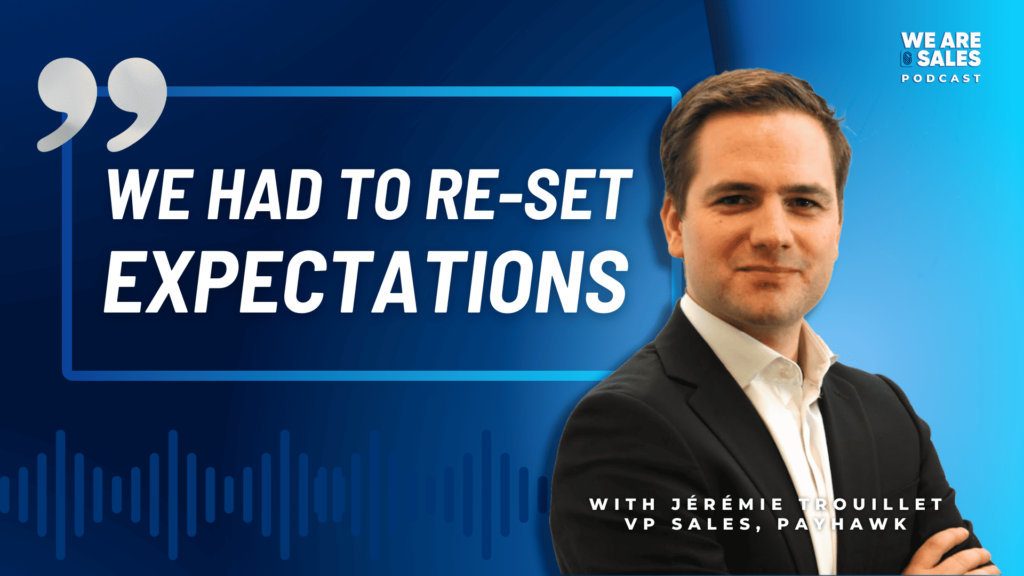Share:
The importance of setting clear expectations to the sales team

Please meet Jérémie Trouillet, VP of Sales at Bulgaria’s one and only unicorn.
That’s right—we had the chance to sit down with the scaling brain behind Payhawk.
Jérémie joined Payhawk in June 2022, just after their impressive Series B extension, making them Bulgaria’s first unicorn with a total raise of $225M.
In other words, Jérémie stepped in at a crucial time, tasked with navigating the company through a phase of intense growth and high expectations.
Long story short: in 1.5 years, Payhawk had to go from ambition to execution, including an expansion into 7 regions, increasing the revenue team from 20 to 100 people, resetting expectations for the sales team and building robust processes, among other things.
Listen to our interview with Jérémie here, or read along to get Jérémie’s view on setting clear expectations.
Want more articles like this one directly in your mailbox?
One of the questions I started with aimed to understand if he had undergone any significant transformation on the “people” side of things.
With zero hesitation, his answer was: “Yes, defining clear expectations.”
“That’s something we lacked at the beginning. We had one priority: recruiting, recruiting, recruiting. The bigger the sales force, the more revenue. The quicker, the better. And, while we were successfully recruiting for a variety of functions, we had not set up clear expectations from the start.”
As Jérémie explains what he meant by having clear expectations, he makes a distinction:
(1) Expectations on performance
“Take BDRs, for example. It’s one thing to tell them ‘book X meetings’ or ‘generate Y pipeline’, but what about what they need to do to get there?”
In other words, setting clear expectations on the activities, the input. Less on the performance, the output. The lack of activities came from a lack of expectation setting in that area.
(2) Expectations on job responsibility
“Another example. Take AEs. Often, they come with the expectation that leads will be given to them, either from BDRs or marketing. However, in reality, when you’re expanding into a new market, there might not be a BDR or a marketing team, and it may take months before they’re recruited and onboarded. This being said, it is mission-critical to prioritize pipeline generation, and we would expect the AE to know that.”
Unless clearly stated, can we really blame the AE for not prioritizing pipeline generation? A debatable question. However, if expectations had been set from the get-go, then this question might not even have to be raised.
Jérémie expands on this idea of expectation setting:
“If you want clear expectations, you essentially need three things: clear documentation, alignment, and consistency of messaging.”
- Detailed documentation: if you can articulate how each activity should be done, your chances of having them done by the letter increase significantly. Start with documentation.
- Alignment & consistency of messaging: from the people team to the manager, from hiring to coaching, be consistent in what’s being expected. For example, a BDR candidate might be enthusiastic about having meetings booked, but not about what’s required to actually book them.
What I particularly like about Jérémie is the fact that he is genuinely looking at the controllables:
“I was not pointing fingers; I was rather challenging us as an organization: what had we done to set ourselves up for success?”
Makes me wonder – how are you articulating expectations in your sales org?

